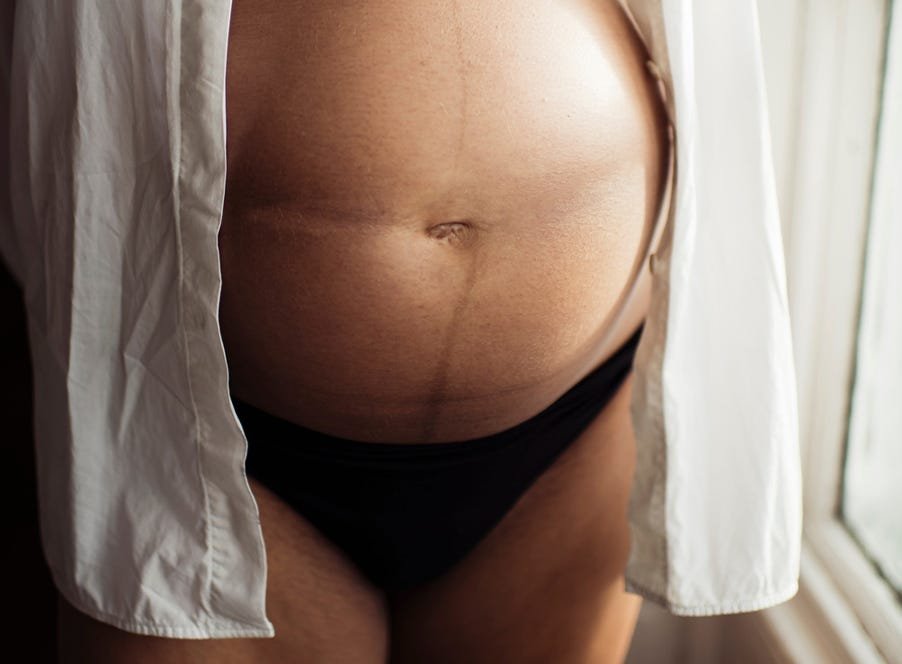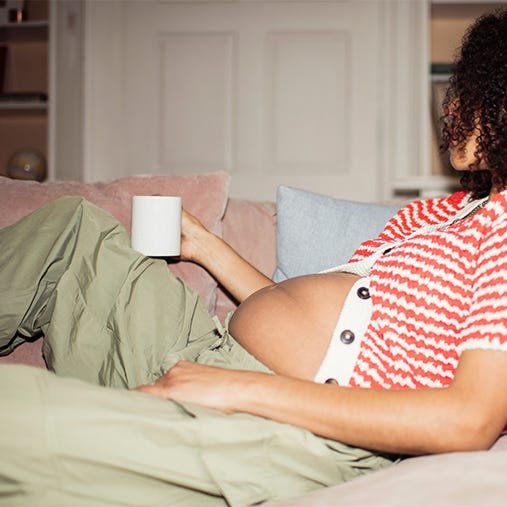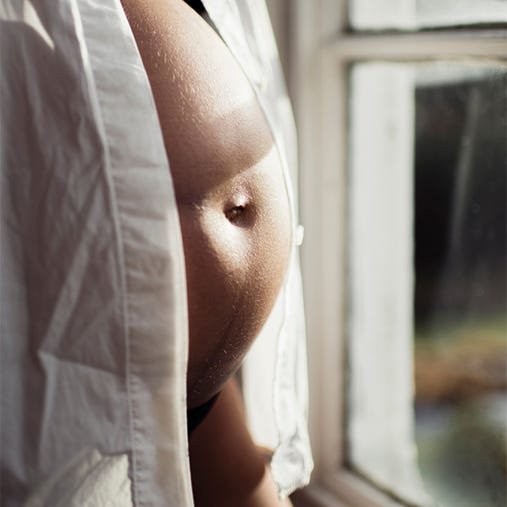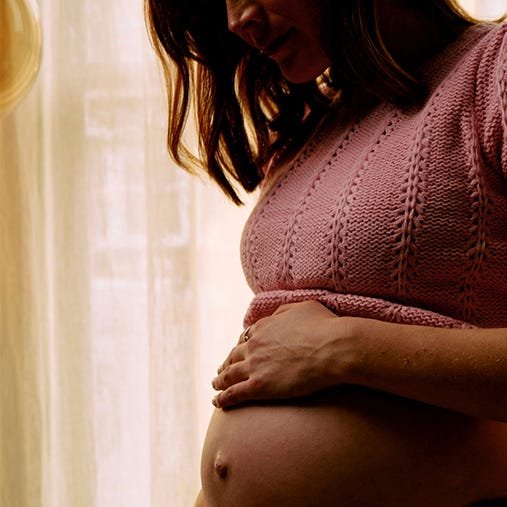It's normal to have tons of questions about how your body will change when you find out that you're pregnant. Every pregnant body is amazingly unique, and baby bumps are not one-size-fits-all!
Let's run through when baby bumps usually start to 'pop', cover how your bump will change as it grows from one week to the next, and answer some of the most frequently asked questions about weight gain during pregnancy.
What week does your pregnancy bump start to show?
Although every pregnancy is different, first-time mum's bumps often start to show sometime between 16 and 20 weeks. For those who've been pregnant before, a noticeable bump might not show until the middle of the second trimester.
Don't hesitate to get in touch with your healthcare provider if you have any questions or concerns about your pregnancy at any stage. But rest assured that if your bump starts to show a little earlier or later, it's usually not cause for concern.
Can your bump shape give you a clue about your baby's gender?
Some people say that baby girl bumps are low and wide, while baby boy bumps are higher and rounder. Although it can be fun to guess what a baby's gender will be by looking at their mum's bump, it's just an old wives' tale and isn't supported by any scientific research.
When it comes to baby boy and baby girl bumps, there's very little difference in terms of shape or growth. The weight and positioning of the foetus can impact the shape or size of a mum's baby bump, but not the baby's gender. For example, if your baby is positioned slightly sideways, your tummy may look and feel wider rather than longer.
The only reliable ways to predict a baby's gender are:
- to have genetic testing (such as Non-invasive Prenatal Testing)
- to find out at your anatomy ultrasound scan
- or to just wait it out until they're born
Your pregnancy bump week by week
Watching your bump grow throughout your pregnancy can be both exciting and emotional.
It can sometimes be hard to adjust to the physical changes that pregnancy brings. But try not to let how other mums look affect how you feel about your pregnant tummy and your overall body image.
It's important to remember that factors such as your frame, core muscles, whether you've been pregnant before, your age, and your baby's position can all affect the size and shape of your bump.
One thing's for sure, your bump will get rounder and larger as your pregnancy progresses and your baby grows.
Let's break down the weeks of pregnancy and run through a rough baby bump timeline...
|
Pregnancy Stage
|
Baby Bump Size
|
| 1-4 Weeks |
You won't be able to spot any bump growth at this early stage - but that doesn't mean your body isn't changing!
In the first four weeks of pregnancy, your uterine wall will thicken, and your body will produce more human chorionic gonadotropin or hCG - aka the pregnancy hormone. This tells your ovaries to keep releasing estrogen and progesterone to support your baby's development.
|
| 5-8 Weeks |
Many parents report that they really start to 'feel' pregnant during these weeks.
And although there may be no noticeable bump growth just yet, your uterus will start to grow and put pressure on your bladder. So, get ready for more trips to the bathroom.
|
| 9-12 Weeks |
During these weeks, there's the chance that your baby bump may start to show a little. You might also notice changes in your body's profile due to your pregnancy weight gain or growth above your pelvis.
Keep in mind that every pregnancy is different. Some people may look noticeably pregnant by the end of their first trimester, while others won't see any signs of a bump just yet.
|
| 13-16 Weeks |
As you enter the second trimester, your baby will start to grow faster. You'll probably start to notice that your bump is really starting to show by the time you're 16 weeks pregnant.
You may want to start shopping for some comfy maternity clothes as your tummy grows. Parents often start to track their bump's growth by taking progress photos each week.
|
| 17-20 Weeks |
You may start to feel your little one move and kick around now, and by week 18, you'll be able to start tracking your bump's growth and notice changes in how your body looks and feels.
Some lower back aches and pains in the abdomen are common during these weeks, but don't hesitate to speak to a medical professional if you're concerned.
When you reach week 20, your healthcare provider will start to monitor your baby's development by taking fundal height measurements. These measurement guidelines roughly equal the number of weeks along your pregnancy is.
|
| 21-24 Weeks |
Between weeks 21 and 24 of pregnancy, your baby will grow at a faster pace than ever before, meaning your bump will get bigger.
It's around this time that you may notice changes to your skin, too. You might develop darker areolas, hyperpigmentation on your face, and a linea nigra - a dark, vertical line that extends from your belly button to your pubic area.
These are all completely normal parts of pregnancy.
|
| 25-28 Weeks |
As you enter your third trimester and reach week 25 or 26 of pregnancy, you may notice that your belly button starts to protrude as your uterus continues to grow - especially if you usually have an innie.
Your fundal height at 28 weeks may be around 28 centimetres or 11 inches.
|
| 29-32 Weeks |
As your due date draws nearer, you may notice some stretch marks developing on your boobs, tummy, and thighs. Your bump will continue to grow and may change shape as your uterus expands up towards your rib cage. |
| 33-36 Weeks |
By now, your bump will be very visible and may cause some physical discomfort. If you feel comfortable, light exercises such as walking or prenatal yoga can help to alleviate pregnancy aches and pains
It's during these weeks that you may notice your bump shift downwards as your baby 'drops' into position in preparation for delivery. This movement can put more pressure on your pelvis and bladder, but you may feel some relief in your upper abdomen. Digestive symptoms, such as heartburn or constipation, may subside as the baby makes their way down towards the birth canal.
If your baby is breech - with their bottom or legs down and head up - and doesn't move downwards into a typical birthing position (head down and legs up), your bump may be wider or slightly top heavy.
|
| 37-40 Weeks |
Once you've passed the 39-week mark, your pregnancy is classed as 'full term'.
By 40 weeks, your uterus will have finished expanding to create room for your developing baby, and probably weighs about 1kg or 2.5 lbs! This is when your bump will be its biggest, so remember to relax, rest, and put your feet up whenever you can!
|
Pregnancy bump shape explained
First and foremost, it's important to remember that every pregnant person's body is different, and yours is working hard to support the growth of your baby.
Over time your bump will change shape as your baby grows. Some people have a D-shaped bump, and others have a B-shaped bump that appears to have top and bottom half like an uppercase letter B. No matter what shape your pregnancy bump is, rest assured that if you and your baby are healthy, your bump is normal.
As you enter the fourth trimester after birth, you won't necessarily look pregnant anymore, but you may still have a bump and your tummy may remain swollen for two to six weeks as your body recovers, and your uterus shrinks back down to its pre-pregnancy size.
However your postpartum body looks, it's important to be kind to yourself and celebrate the incredible journey you and your body have been on during pregnancy.
What is fundal height tracking?
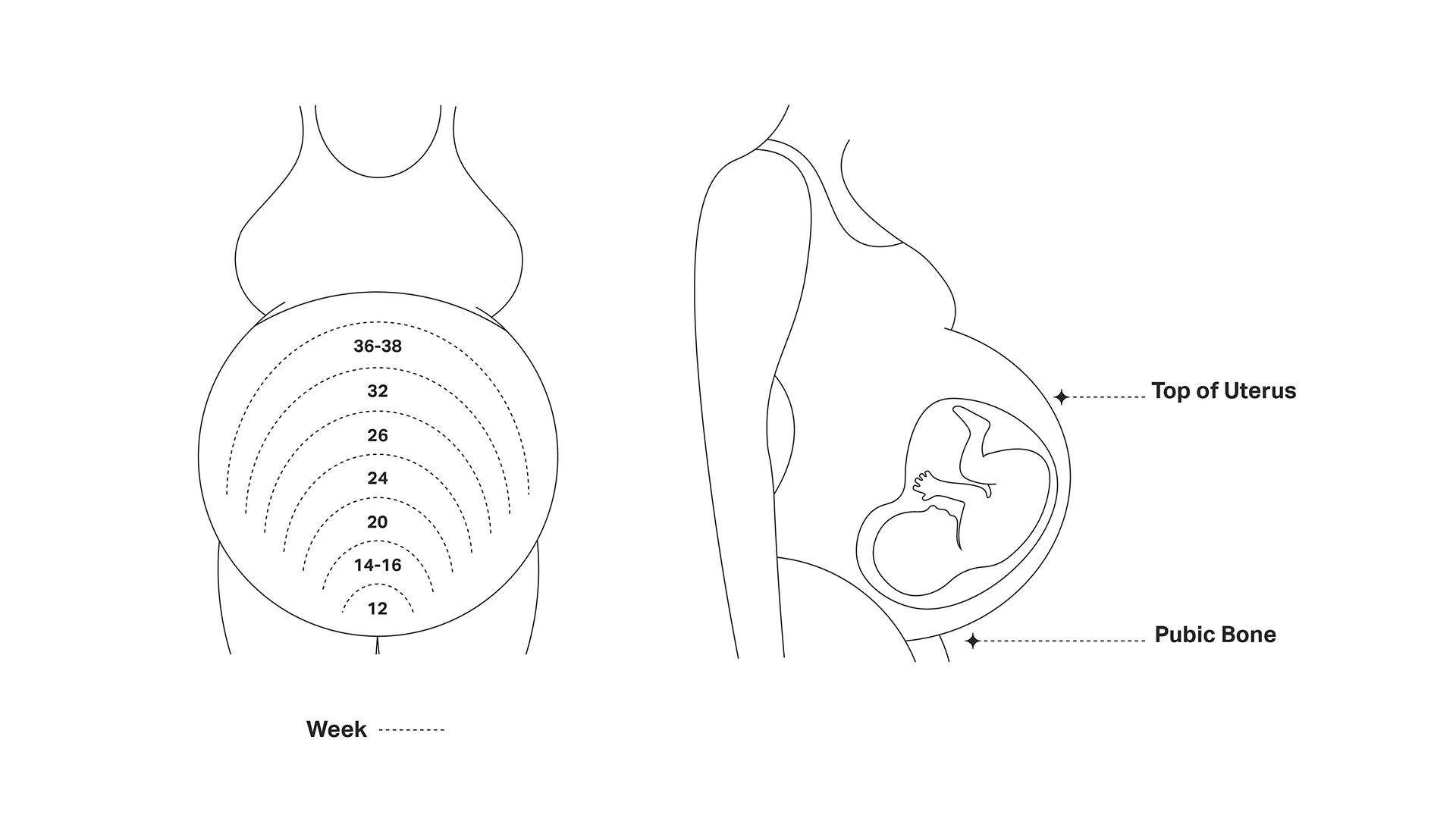
From around week 20 of your pregnancy, your healthcare provider will start to measure your bump.
They'll use a tape measure to measure the distance from your pubic bone to the top of your uterus. This will give them a measurement which is known as fundal height. They'll use this figure to monitor your baby's size and growth rate as your pregnancy progresses.
The fundal height measurement (in centimetres) roughly equals the number of weeks along you are. For example, in week 20, your fundal height measurement may be between 18 and 22 centimetres.
Measuring one or two centimetres more or less isn't usually cause for concern. It could just mean that your due date is slightly off, or that your baby is sitting high in your uterus.
What to expect when it comes to weight gain during pregnancy
How much your weight changes during pregnancy will depend on several factors, but most people tend to gain between 10kg - 12.5kg or 22lb - 28lb during pregnancy.
Although it's important to eat well, stay hydrated and stay active while you're pregnant, there's usually no need to worry if you're gaining weight.
Not only is it normal, but it's also an important and healthy part of pregnancy! Weight gain during pregnancy can be caused by:
- your body storing fat ready to make breast milk
- your growing placenta - the brand-new organ that feeds your baby and removes waste
- increased fluids in your body
- and the fact that you're creating a whole new person inside of you!
However, if you're ever worried about your weight or any other aspect of your health during your pregnancy, don't hesitate to ask your midwife or GP for advice and support.






